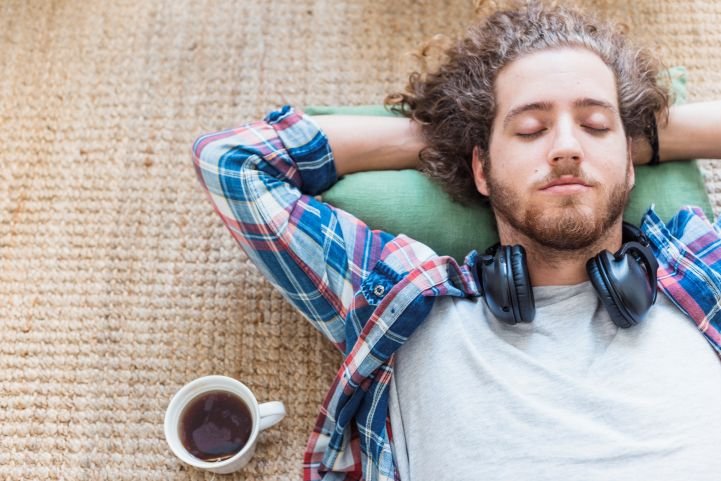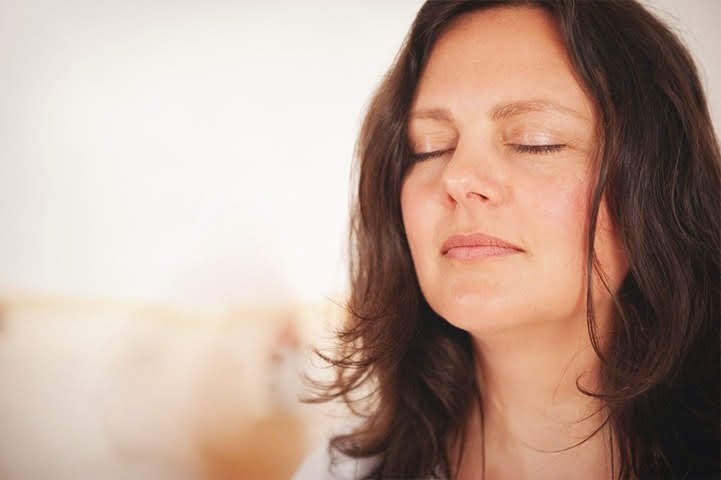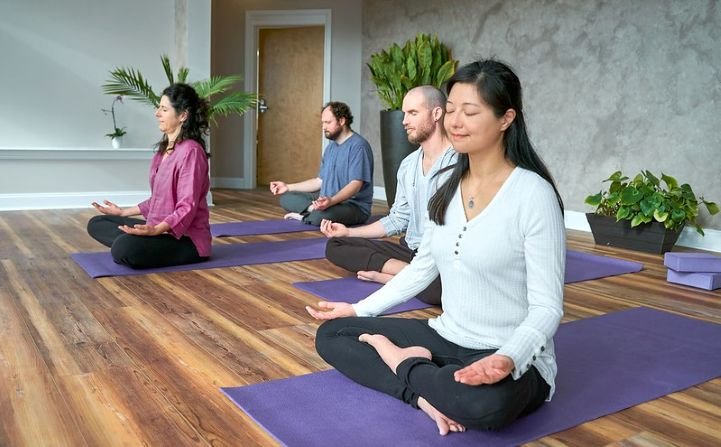
Lifestyle
Discover the Dutch art of doing nothing and learn how relaxation, mindfulness, and meditation can bring calm, clarity, and joy to your daily life.
Relaxation is not an indulgence but a vital part of a balanced, healthy life. When we relax, our body shifts from the stress-driven fight-or-flight response into a calmer rest-and-digest state governed by the parasympathetic nervous system. This physiological change lowers cortisol and adrenaline, allowing muscles to loosen, digestion to improve, and the mind to quiet.
In today’s hyperconnected world, relaxation is often the first thing we sacrifice. Yet taking even a few minutes each day to practice conscious rest—whether through breathwork, gentle stretching, or mindful stillness—can profoundly influence physical and emotional well-being. It is during these pauses that creativity, healing, and self-awareness emerge naturally.
By embracing the art of doing nothing, we rediscover how to simply be—to find joy in stillness, listen to our inner rhythms, and reconnect with the world beyond deadlines and screens. Mindfulness and meditation play an essential role in this process, teaching us to rest in awareness rather than distraction. Over time, regular relaxation practice helps reduce anxiety, stabilize mood, and nurture a deep sense of fulfillment.
The phrase niksen—the Dutch concept meaning “doing nothing”—captures this state beautifully. Far from being lazy or unproductive, niksen is a conscious decision to pause without a goal, to let the mind drift freely without guilt. It is absolutely okay to do nothing, and embracing this can be a powerful act of self-care. The idea of doing nothing is not just an action, but a mindset—an approach that allows us to let go of purpose and outcome. It encourages us to detach from busyness and surrender to presence.
In niksen, there is no need to check a phone, plan the next step, or “optimize” the moment. You simply exist. This may look like sitting by a window and watching the rain, lying in the grass without headphones, or gazing at the ceiling with no agenda. There is no wrong way to do nothing; any attempt to relax and let go is valid. By stepping off the treadmill of constant doing, you give the nervous system permission to recalibrate and the mind space to wander—a process linked with creative insight and problem-solving.
Many people fear doing nothing because it feels unfamiliar or unproductive. Some wonder what they are supposed to do or expect during these moments of stillness, but the beauty of niksen is that there are no strict rules or expectations. In fact, doing nothing can actually make you more productive in the long run by enhancing creativity and mental clarity. But in reality, the brain is still active during rest, often entering a “default mode network” that supports emotional integration and meaning-making. When we allow these pauses, we recharge mental resources and strengthen resilience. During these idle moments, the mind does tend to ruminate, and worries can surface, but this is a natural part of the process. The art of doing nothing, therefore, is not a void—it’s fertile ground for renewal.

The Dutch have long recognized the importance of balance between effort and ease. Their approach to life—reflected in phrases like gezelligheid (coziness, connection)—encourages simple pleasures shared with others. In this culture, leisure is not seen as wasted time but as an integral part of health and happiness.
In recent years, niksen has become an international trend featured in publications such as The New York Times and Time Magazine. Dutch psychologists have emphasized how the practice helps prevent burnout and supports mental clarity. By observing the Dutch model, we learn that well-being doesn’t require constant self-improvement. Instead, it blossoms when we stop pushing and start allowing. Similar practices to niksen can also be found in other countries, showing that the idea of doing nothing is not unique to the Netherlands but is embraced worldwide.
Even outside the Netherlands, anyone can adopt this approach. It can be as simple as adding pockets of stillness to the day—drinking morning tea without multitasking, pausing between meetings, or ending the day without screens. Over time, these micro-moments of stillness reshape the nervous system, helping us cultivate inner peace in the midst of modern life.
Cultures around the globe have developed beautiful ways to restore balance and reconnect with the essence of being human. Below are practical tips inspired by different countries, offering simple techniques you can try for relaxation:
Each tradition teaches that relaxation is not passive—it is an active process of self-connection. You can experiment with these practices to discover what resonates most: deep breathing, mindful walking, gentle yoga, or reading in silence. The right method is the one that helps you feel grounded, spacious, and alive.
When relaxation becomes a regular part of life, transformation follows. The benefits extend across physical, emotional, and spiritual levels:
Research consistently shows that people who incorporate mindfulness and relaxation into their daily routines report lower levels of anxiety, depression, and burnout. By resting more intentionally, you actually become more effective—able to focus better and connect more deeply with others.

Mindfulness is the practice of being fully present in the here and now, while meditation is the structured method through which that presence deepens. Together, they invite awareness into every moment of life.
Through mindfulness, we notice sensations—the breath entering and leaving, sunlight on skin, the sound of birds or city noise—without judgment. Over time, this practice strengthens concentration and emotional regulation.
Meditation takes us one step further. By closing the eyes and observing thoughts without attachment, we learn to rest in pure awareness. To maintain focus during meditation, it is important to avoid unnecessary talk or conversation, as this helps prevent distractions and supports deeper mindfulness. Regular meditation activates the parasympathetic nervous system, reduces amygdala reactivity (the brain’s fear center), and enhances prefrontal cortex function (the area linked with calm focus and empathy).
At the Art of Living Foundation, practices like Sahaj Samadhi Meditation and SKY Breath Meditation (Sudarshan Kriya Yoga) offer evidence-based pathways to profound relaxation. Sahaj Samadhi, meaning “natural effortless meditation,” helps the mind settle effortlessly into stillness. SKY has been extensively studied, including by prestigious universities like Yale, Harvard, and Stanford, for its ability to reduce stress, anxiety, and depression. Practiced separately or together, SKY and Sahaj help you to reclaim profound rest.
When we make mindfulness and meditation a part of our daily rhythm, the art of doing nothing becomes effortless—it becomes our natural state of being.

Your surroundings shape your mental state. Cluttered, noisy, or overstimulating environments can increase cortisol and make relaxation difficult. By consciously curating your space, you create a sanctuary that supports peace. The house can serve as a sanctuary for relaxation, offering a distraction-free environment where you can unwind and practice mindfulness.
Simple ways to enhance your environment include:
Even a small ritual, like lighting incense or diffusing essential oils before meditation, can signal to your body that it’s time to unwind. Whether it’s a cozy reading nook, a quiet room, or a garden bench, your environment can become a reflection of your inner calm.
Self-care is more than pampering—it’s self-respect in action. It’s the decision to honor your needs, emotions, and energy levels. By prioritizing self-care, you cultivate resilience and prevent burnout.
Effective self-care can include:
Self-care ensures you have the inner resources to contribute meaningfully to others. It reminds us that being kind to ourselves is the foundation of a peaceful life.
In a culture that equates busyness with worth, learning to say “no” is an act of courage. Boundaries protect your time, energy, and mental health. Without them, we risk depletion and resentment.
Start by clarifying what truly matters to you. Prioritize commitments that align with your values, and gracefully decline those that do not. Saying no to excess allows you to say yes to authenticity, creativity, and rest.
Boundaries also apply to digital life—setting limits on email, social media, and constant notifications can restore focus and serenity. When you honor your own limits, you model self-respect and encourage others to do the same.

Our modern world often treats boredom as a problem to fix. But psychologists now recognize that boredom can spark creativity and introspection. When the mind isn’t occupied, it begins to process emotions and ideas that have been suppressed beneath constant stimulation. The middle of the day can be an ideal time to embrace quiet or boredom, offering a natural pause for reflection.
Embracing quiet time allows you to reconnect with yourself. Instead of reaching for a screen when nothing is happening, try allowing the stillness. You might lie down comfortably, letting your body relax and your mind settle. Watch your breath, notice your surroundings, or simply let your mind wander. In this space of non-doing, your inner landscape unfolds naturally.
Regular periods of silence—through silent retreats, digital detoxes, or simply quiet mornings—strengthen focus and intuition. Silence becomes not emptiness, but fullness—the quiet hum of presence.
Technology can either support or sabotage your relaxation goals. Used consciously, it can facilitate calm through meditation apps, soothing playlists, or online yoga classes. Used excessively, it keeps the nervous system in a constant state of alert.
To use technology mindfully:
Mindful technology use turns digital tools into allies of peace rather than sources of stress. The goal is balance—using devices to enhance awareness, not escape from it.

The mind and body are interconnected; what we eat profoundly affects how we feel. Foods rich in nutrients that support the nervous system—magnesium, B vitamins, and omega-3 fatty acids—help maintain equilibrium.
Relaxation-friendly nutrition includes:
A well-nourished body is a calm body. By eating with mindfulness—savoring flavors, chewing slowly, and expressing gratitude—we turn meals into moments of meditation.
Sleep is the cornerstone of well-being. During sleep, the brain consolidates memory, the body repairs tissues, and hormones regulating stress and appetite are balanced. Chronic sleep deprivation can heighten anxiety, weaken immunity, and impair concentration.
To promote restorative sleep:
Deep rest allows the nervous system to reset, supporting every other aspect of mental and physical health. In truth, sleep is the body’s most natural form of “doing nothing”—and yet it achieves everything.

In many cultures, taking time to relax or simply do nothing is often met with a sense of guilt, as if every moment must be filled with productivity. However, as highlighted in a recent New York Times article, embracing the Dutch art of doing nothing—known as niksening—can be a transformative practice for both mind and body. The concept encourages us to let go of the pressure to always be busy and instead enjoy life by allowing ourselves to pause, breathe, and let our minds wander.
When we take a break, even for just five minutes, we give ourselves permission to step away from stress and open the door to new ideas and creative insights. Sitting by a window, watching the world go by, or simply being present in nature can be a good thing, helping to lower stress levels and increase happiness. The Dutch have long understood that relaxation is not laziness, but an essential part of a balanced life.
If you feel guilty about taking time for yourself, remember that the art of doing nothing is a practice that leads to greater joy and fulfillment. Begin with small moments—perhaps a few minutes of meditation or quiet reflection each day—and gradually allow yourself to savor these pauses. Over time, you’ll discover that relaxation is not only beneficial but also a vital ingredient in enjoying life’s simple pleasures.
Mastering the art of doing nothing requires patience—a quality that can feel elusive in our fast-paced, busy world. We are often conditioned to equate waiting with wasted time and productivity with worth. Yet, science shows that taking a few minutes to slow down and relax can have profound effects on the brain and body, reducing anxiety and depression while boosting creativity and overall happiness.
Practicing patience means allowing yourself to take a break, to wait without rushing, and to be present in the moment. Whether you’re sitting quietly on a beach, watching the sunset, or enjoying a glass of wine at the end of a stressful day, patience transforms these simple acts into opportunities for relaxation and joy. It’s a skill that grows stronger with practice, helping you to let go of the need to always be doing and instead appreciate the beauty of just being.
As you begin to incorporate patience into your daily life, you’ll find that the stresses of the world become easier to manage. The art of doing nothing becomes a pathway to happiness, allowing you to enjoy life more fully and discover a deeper sense of peace within yourself.
Making relaxation a regular part of your life is key to truly embracing the art of doing nothing. Establishing a routine—whether it’s a few minutes of meditation each morning, a daily walk in nature, or simply sitting in silence—helps ensure that relaxation becomes a priority, not an afterthought.
Start small: dedicate just a few minutes each day to a relaxing activity that brings you happiness. As you become more comfortable with this practice, gradually increase the time you spend unwinding. According to reviews and wellness experts, having a consistent routine can make it easier to stick with relaxation, even on the most stressful days.
Taking a break to recharge isn’t just about rest—it’s about coming back to your tasks with renewed energy, focus, and creativity. Whether you choose to read a book, listen to calming music, or simply enjoy the quiet, making relaxation a habit will help you enjoy life more fully and maintain a healthy balance between work and well-being. The art of doing nothing, when woven into your daily routine, becomes a powerful tool for happiness and fulfillment.

At the heart of the Art of Living teachings is the realization that meditation itself is the art of doing nothing. As Gurudev Sri Sri Ravi Shankar beautifully puts it: “Meditation is the art of doing nothing.”
Through Sahaj Samadhi Meditation, practitioners learn to effortlessly transcend thought, entering deep states of rest where the mind rejuvenates and consciousness expands. The word Sahaj means “natural,” and Samadhi means “equilibrium”—together signifying a return to our innate, peaceful nature. With consistent practice, one can master the art of doing nothing, developing a high level of skill and expertise in letting go and being present.
Gurudev’s Golden Keys for Meditation guide us from effort to ease.
Adopting these intentions helps the mind settle into a state of stillness and deeper being, allowing meditation to happen effortlessly.
When combined with Sahaj Samadhi Meditation, this approach cultivates relaxation and emotional resilience.
In this tradition, the art of doing nothing is not escape—it is expansion. It reconnects you with the silent source from which all creativity and joy arise.
In a society that measures worth by productivity, reclaiming the art of doing nothing is a profound act of self-liberation. It reminds us that we are human beings, not human doings.
When we pause, breathe, and listen, we rediscover life’s quiet miracles—the sound of rain, the warmth of sunlight, the rhythm of breath. From this stillness, clarity and compassion flow naturally. Mastering the art of doing nothing can be hard work, requiring discipline, self-control, and consistent practice. It also means not letting yourself be distracted by other things, allowing true presence and relaxation.
Next Step: Experience the power of effortless rest through the Sahaj Samadhi Meditation Course with the Art of Living Foundation. These evidence-based practices teach the true art of doing nothing—where inner silence becomes your greatest source of energy and joy.
Visit our website to begin your journey.












